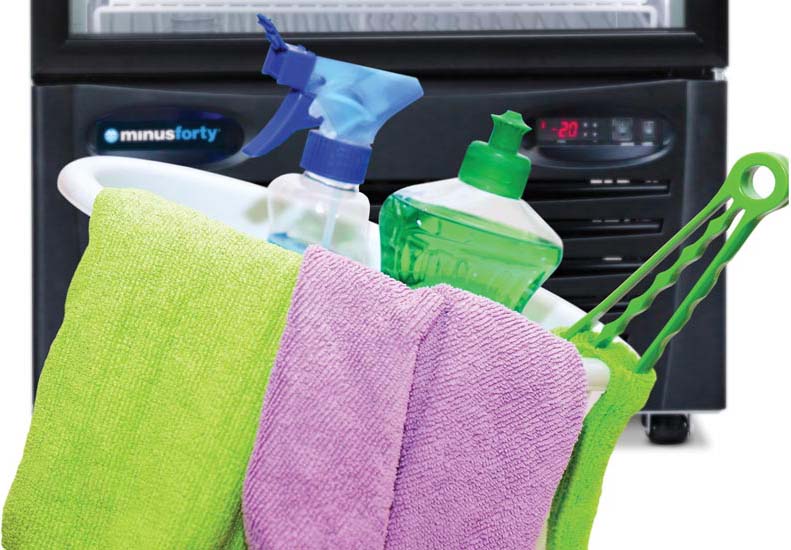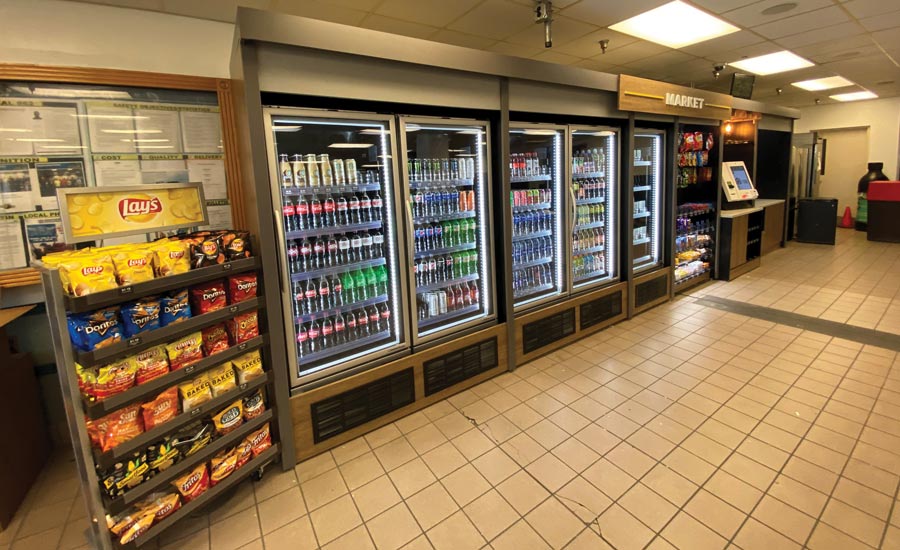During the height of the COVID-19 pandemic, people swamped supermarkets and other food retailers, stocking up on everything they could find, from fresh meat to frozen pizza. Refrigeration equipment was used hard as doors were opened and closed incessantly by shoppers — as were grocery store employees, who worked around the clock to keep shelves stocked.
For now, the panic has ebbed, and food retailers are seeing more normal foot traffic through their stores. Still, there is concern about transmission of the COVID-19 virus, and grocers — as well as restaurant owners — are becoming more vigilant in keeping their refrigeration equipment as clean as possible.
More Cleaning for Refrigeration
Refrigeration contractors have noticed an uptick in the number of clients who are asking for additional cleaning and sanitizing measures. As Mike Ochoa, executive vice president of sales and marketing at CoolSys, Brea, California, noted, grocers are certainly more concerned about cleanliness and sanitation, as evidenced by the store staff wearing masks and grocery carts being sanitized between customer uses.
“There has definitely been a heightened focus on safety, resulting in HVAC filter changes and upgrades, case cleaning, sneeze guard installations, etc.,” he said. “Like all of us, grocers are also making sure their staff is outfitted with appropriate PPE [personal protective equipment] and that ‘high touch’ areas are being sanitized frequently.”
Sanitation is definitely a big deal in grocery stores now, said Bill Almquist, president and CEO of Almcoe Refrigeration in Dallas, Texas. “Before the pandemic, there was some interest in having us come in after hours with our pressure washers to clean the equipment, but now grocers are much more interested in that service.”

DEEP CLEAN: Minus Forty recommends deep cleaning refrigeration units monthly, although exterior door handles and doors should be wiped down several times daily as part of a COVID-19 cleaning routine.
To that end, refrigeration equipment manufacturer Minus Forty recommends deep cleaning refrigeration units monthly.
“However, exterior door handles and doors are high-traffic areas and should be wiped down several times daily as part of a COVID-19 cleaning routine,” said Randy Skyba, vice president of sales marketing at Minus Forty. “Having hand sanitizer or sanitizing hand wipes (with at least 70 percent alcohol content) next to the refrigeration units is another way to help keep everyone clean and safe.”
While COVID-19 has resulted in a greater focus on refrigeration equipment maintenance in both grocery stores and restaurants, it should always be a priority in order to keep units operating at peak performance.

EVEN DISTRIBUTION: Products should be evenly distributed inside refrigeration units, since overloading blocks interior airflow, which can lead which can lead to spoiled food and irreparable equipment damage.
“Regular inspections to check for blockages should be routine,” said Skyba. “Products should be evenly distributed inside the units as well, since overloading blocks interior airflow, which can lead to spoiled food and irreparable equipment damage. If refrigeration equipment doesn’t have optimal external airflow, or the ability to ‘breathe,’ this can cause a blocked condenser, leading to possible equipment failure, overheating, spoiled product, higher electrical costs, or even void the warranty.”
Proper Cleaning Procedures
Every OEM will have its own cleaning procedures for refrigeration equipment, and contractors should always follow those guidelines. For self-contained commercial units, Minus Forty recommends the following:
- Be sure to unplug the unit from the outlet. It’s important to note that some units may still run fan motors and electronics even when switched off.
- Remove all products from the unit and thoroughly clean any spillage inside, as it could cause foul odors and mold to form.
- Allow additional time to fully melt ice in commercial freezers, especially chest-style freezers without automatic defrosts. Avoid scraping ice from the inside of the unit, as this may damage the unit or even puncture the wall, potentially damaging the refrigeration system.
- Leave the doors open to dry the interior of the unit, then wipe all surfaces with a detergent that is food-safe. There are some areas that will be inaccessible, so it’s important to leave the doors open and provide sufficient airflow to evaporate the majority of the moisture.
- Leave the door propped open slightly to allow any remaining moisture to escape. Failing to do so can also lead to odor and mold forming inside of the unit.
- When restarting the equipment, allow the unit to cool down to its ideal operating temperature before loading it with product.
After performing these cleaning procedures, contractors should check the temperature in the refrigeration units to make sure they are in the proper range for food safety.
“Just like increased temperatures mean illness in humans, the same could be said for a refrigeration unit,” said Skyba. “Temperature variations are a serious threat to food safety, potentially contributing to bacteria growth, pathogens, and cross-contamination. In restaurants and grocery stores where doors are being opened and closed all day, maintaining optimal temperatures within the unit is crucial. If the unit does not have a temperature malfunctioning safeguard (such as Minus Forty’s NAMA-approved Smartlock™ food health monitor), owners should aim to monitor temperatures frequently to make sure they are within the healthy range.”
Skyba added that to ensure food safety, contractors — and end users — should remember the acronym ACT: airflow, cleaning, and temperature. All are necessary in order to keep refrigeration equipment operating safely and reliably.



Report Abusive Comment